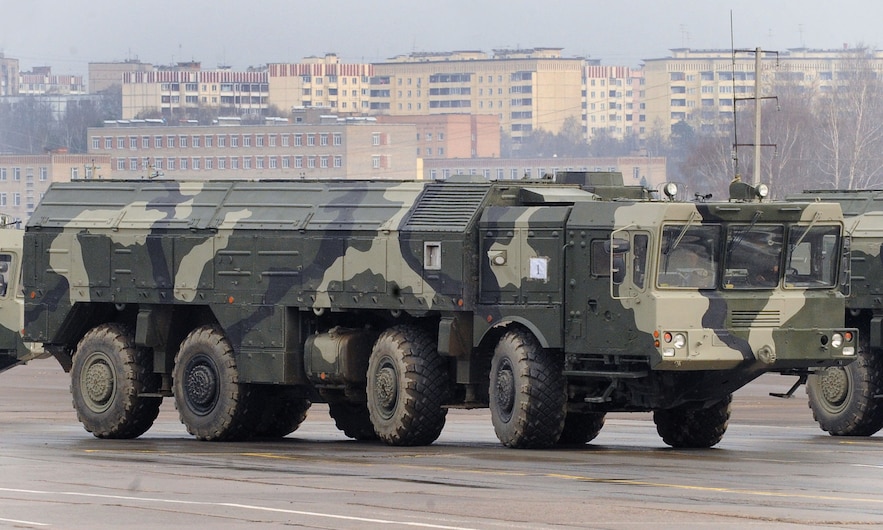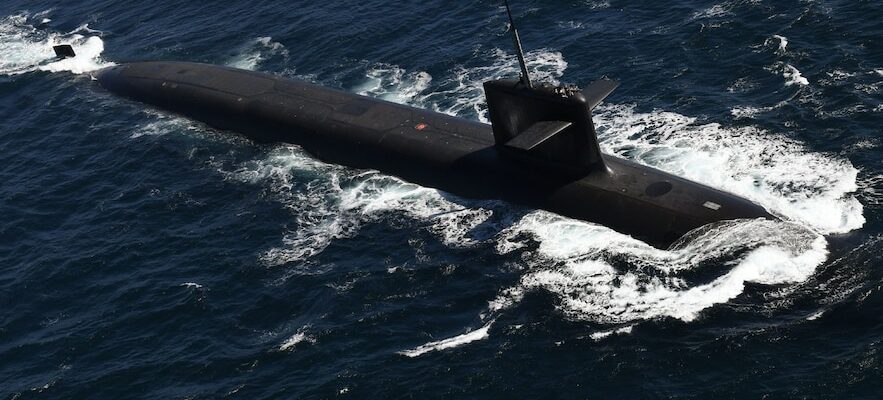How can French deterrence, structured by the Cold War, be adapted to the new strategic context? The question occupied the private staff (EMP) of the Elysée and the high levels working on this area for several years, during the first presidential term of Jacques Chirac (1995-2002). The USSR and its Warsaw Pact disappeared, and with them the threat of a Soviet invasion of the continent and France. In the process, NATO’s main mission is no longer territorial defense, but the resolution of external crises – former Yugoslavia, then Afghanistan.
Once the sequence of resuming tests in Polynesia is completed, Jacques Chirac announces that “we must have sufficient [d’armes nucléaires] to be respected, but not too much [non plus]”. The land component is dismantled: both the strategic ballistic missiles from the silos of the Albion plateau, as well as the mobile ones, with a range of nearly 500 kilometers, from the Hades force. If the Strategic Air Forces (FAS) – nuclear missiles carried by aircraft – is maintained, the number of class ballistic missile submarines (SSBNs) The Triumphant to build goes from six to four. It remains to adjust the doctrine.
Stationed at the EMP, former submarine commander Edouard Scott de Martinville is participating in the work. “Very important decisions are taken, which have had little echo, but are the subject of a consensus”, despite cohabitation, said, at the end of November, the admiral (2S), during the conference on deterrence French co-organized by the Charles-de-Gaulle Foundation and the Atomic Energy Commission (CEA). The “distant” – mentioned by Prime Minister Lionel Jospin in a 1999 speech, implying China – is taken into account, he recalls, while the “damage would be exerted primarily on the centers of power ” and no longer cities. “Flexibility is given to the ballistic component”: SSBNs are no longer required to fire all their missiles at once.
It was at this time that French deterrence, as it appears today, stabilized. A quarter of a century later, it would be wise to adapt it to truly Europeanize it, in the interest of France and its allies, argue two experts, Etienne Marcuz and Stéphane Audrand. They do not belong to the official strategic circles, one of whose missions is to work on doctrine, discreetly, for the president. However, they consider it useful for a public debate to begin, in a context of profound upheavals in the international order – Russian invasion of Ukraine, possible European disengagement of the United States with the new Trump administration, rise in power of the China.
The French SSBN submarine Le Terrible, July 4, 2017, on which French President Emmanuel Macron visited.
© / afp.com/Fred TANNEAU
An opening has also been initiated by Emmanuel Macron. Like his predecessors since Jacques Chirac, the president has repeatedly stressed that there is a “European dimension” in France’s vital interests, defended by its deterrence, and that there is room for discussion with its allies. “Let’s put everything on the table and look at what truly protects us in a credible way,” he further proposed in an interview with the regional press group Ebrain April. France will keep its specificity but is ready to contribute more to the defense of European soil.”
Strategic systems analyst, military nuclear educator on social networks, Etienne Marcuz thus proposes the creation of a “European Integrated Deterrence Initiative”. It would bring together countries on the continent which would rely in particular on the nuclear weapons of France and the United Kingdom, the only two powers in Europe with them. He suggests that they coordinate their patrols so that there are always three French and British SSBNs at sea, without calling into question the strict operational control of Paris and London over their nuclear weapons. He proposes, above all, “to allocate to this initiative a certain number of ASMPA nuclear missiles, carried by the Rafale, in the image of the US extended deterrence model. These Rafale would be likely to be dispersed, in the event of serious crisis, on European territory, while still remaining under strict French control.
The movements of the Rafale of the initiative would serve as a strategic warning. And, if necessary, their ASMPA could be used in response to an attack on the vital interests of an initiative member. The idea: to give ourselves room for maneuver in military escalation with an adversary with nuclear weapons – such as Russia. But on one condition: that these nuclear weapons are a complement to the long-range conventional weapons of other European countries, “responsible for delaying a nuclear engagement for as long as possible”, by striking the adversary in depth.
For Etienne Marcuz, current French deterrence does not allow for careful and moderate nuclear reporting, on a European scale, with an adversary like Vladimir Putin. This is also what Stéphane Audrand, international risk consultant and reserve officer, thinks. In an article published by the journal The Great Continenthe defends the idea that the best way to “Europeanize” French deterrence would, in the long term, be a mobile force of surface-to-surface ballistic missiles capable of striking in depth with conventional weapons, and of welcoming nuclear warheads under French control. “Hades”, these missiles dismantled by Jacques Chirac, but with a longer range.

The Russian Iskander ballistic missile vehicle, here during a rehearsal for a military parade in Alabino, near Moscow, on April 20, 201, can carry conventional or nuclear warheads.
© / afp.com/Alexander Nemenov
“This component could be founded in the voluntary European countries, on the basis of bilateral agreements, he proposes. It would add bars to the scale of the dissuasive dialogue, would offer flexibility in the face of Russian threats of nuclear use non-strategic and would make our security guarantee credible.” He specifies: “no need to ‘sacrifice Paris to save Vilnius’, since we could hope to limit an escalation to the theater without engaging strategic forces” (SNLE and ASMPA). According to him, this component will however only be “audible” to Europeans if they can no longer count on American security guarantees, materialized by troops and nuclear weapons – B61 gravity bombs – on the continent.
These two ideas were already mentioned, very succinctly, in an article published this summer by the defense magazine The Rubiconentitled “Europeanizing the bomb”, where it is mentioned, as options, “the deployment of Rafale equipped with nuclear capabilities on the territory of European partners, and possibly the reintroduction of nuclear warheads similar to the Hades system in the countries of the Eastern flank of Europe.”
Duty of humility towards allies on deterrence
Its author, Florian Galleri, is defending a thesis at the heart of the subject this month at the University of Nantes: The European dimension of French nuclear deterrence after the Cold War (1991-2017). “The theorizing of deterrence is currently experiencing a new lease of life, he believes. France wants to share something of its deterrence, without saying what. We must debate it. I defend the idea that it needs to Europeanize, so that its participation in the defense of the continent is not diminished.”
As every president since de Gaulle has insisted, deterrence is considered France’s life insurance in the face of an existential threat. Such ideas must therefore be handled with great caution, their authors are aware of this. Their proposals are a sign that a debate which has disappeared from the public square since the 1990s could return. “It is up to us, researchers and experts, to make suggestions, without avoiding budgetary issues, technical considerations and respect for the Non-Proliferation Treaty,” underlines Héloïse Fayet, of the French Institute of International Relations.
This deterrence specialist also defends an increase in the conventional arsenal in eastern Europe, starting with deep strike systems. “This would increase the cost of an attack for an adversary, in addition to nuclear deterrence,” she explains. She believes that a nuclear umbrella provided by Paris on the continent, in the style of the Americans, is not realistic.
However, it gives two concrete proposals to strengthen the credibility, among its allies, of the deterrence provided by Paris. First, even if the idea is not popular among the military, France could join the NATO Nuclear Planning Group, of which it has never been a part. She could also open a squadron of the Strategic Air Forces to European pilots to be trained on Rafale, as she wrote in The Rubicon. “The most important thing for France, she insists, is that it demonstrates a humility that it is not accustomed to, by intensifying a substantive conversation on the subject with its European partners and by listening to them.” An exchange that could accelerate if Donald Trump decides that it is time for the United States to turn its back on the Europeans.
.
